What's New?
"Gall" on twig - not really a gall
Last week I received a photo from a county agent that showed a 'growth' on a poplar twig (see below). The agent thought it was a gall, but as it turns out, this isn't a gall at all. Instead, it's an egg mass from the forest tent caterpillar (Malacosoma disstria). In this photo, the egg mass is on some type of poplar tree, likely a cottonwood.
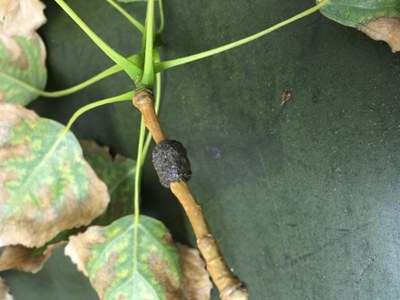
Inside the mass are 150-200 individual eggs (see below), each one capable of producing another hungry caterpillar next year. The egg masses are easily removed from the twigs, but they're hard to spot. This one was removed from an apple tree. Pulling them off and destroying them this year helps reduce the amount of insecticide that we'll apply next year. That being said, forest tent caterpillar populations are cyclic and after peaking, they'll crash for several years and then slowly build up again. (At our home, the last peak was in 2011 and densities were high 2017. Looking forward to seeing if 2018 brings another massive outbreak, or a population crash.)
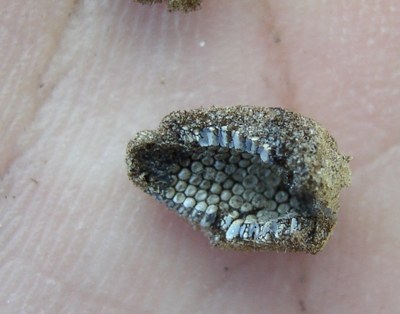
-Joe Zeleznik
Leaf galls already observed
Printed in the NDSU Crop and Pest Report, June 1, 2017.
A number of different pests – insects and mites – produce a variety of galls on tree leaves. We normally don’t observe galls until later in the summer – late June through August. This year, I’ve already observed the galls produced by the maple bladder gall mite (see photo). These tiny red growths are generally harmless to the tree, unless they are extremely numerous. And that can be said of most of the leaf galls that we see on trees.
Galls are produced by the trees in response to early-season feeding from the pest. Then, the pest will generally use the gall as protection – a sort of ‘home’ – while it completes its life cycle. The time to use a pesticide to prevent new damage was a month ago – as leaves were opening and the pests were still exposed. At this point, the gall provides quite a bit of protection, so applying a pesticide now will have very limited effectiveness at controlling what’s there, or for preventing new infestations. By the time we see the gall the damage is done and the pest may already be gone.
The good news is that damage is generally minimal. Trees can lose up to 25% of their leaf tissue without experiencing any stress. Unless the galls cover more than a quarter of the leaf surface, they won’t be causing any major damage to the trees. The only time that I observed damage that high from gall-forming pests was in a number of yards that had heavy applications of insecticide to control insects in the lawn. My hypothesis is that the chemical also killed a number of the predator insects and mites, resulting in a spike in the gall-forming insects.
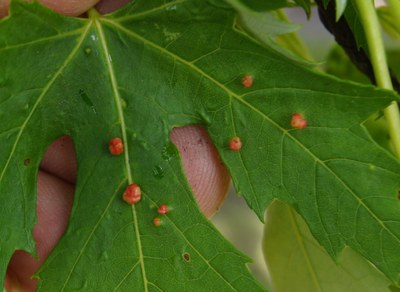
Springtime spruces - 2: Pollen cones
Spring is an amazing time. Most trees are in bloom - even spruce trees. These little red-purple growths are actually the pollen cones. They will swell (and already are swollen in the 3rd picture) and fade to a light purple-green color. Then, they'll release their pollen with the goal that it will reach a receptive cone, resulting in successful reproduction. As spruce cones develop, they're also pretty, with a purplish color developing throughout the summer.
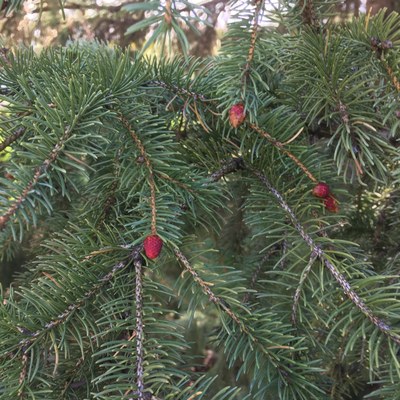
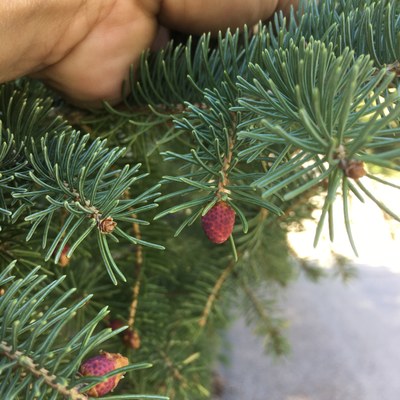
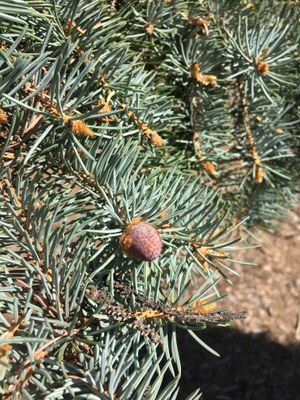
Springtime spruces - 1, girdling Christmas lights
Did you happen to leave up Christmas lights from 2015? I did! I finally pulled them down this weekend, and I’m glad they weren’t left up an extra year. The little twist tie was just starting to dig into the stem a little bit.
Remember, every little wire, strap, zip tie, cable or rope that we leave around the tree stem or even a branch will eventually girdle the tree. It might take 2 years, or 20 years, but eventually the problem will be obvious. Take the time now to check over your trees – especially those that were planted in the last few years – to remove all wires and straps. The same can be said of ties that hold Christmas lights onto a tree, or a strap that holds a tree stand onto a tree. Unless those ties and straps are removed, the trees will run into problems. Check out the photos below to see the damage.
-Joe Zeleznik
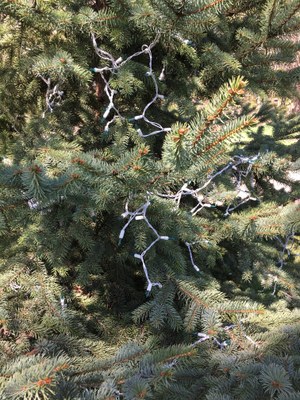
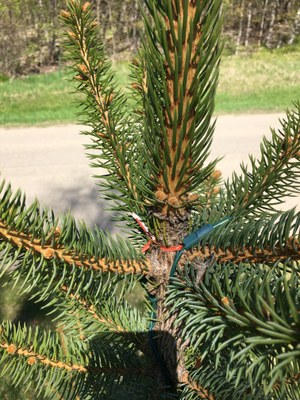
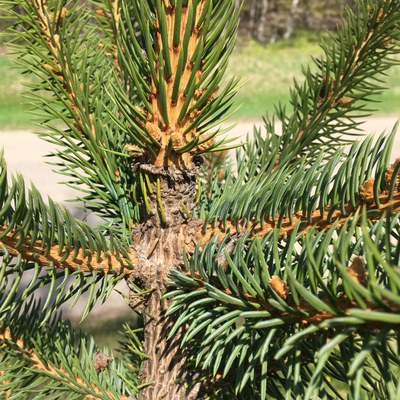
Document Actions

